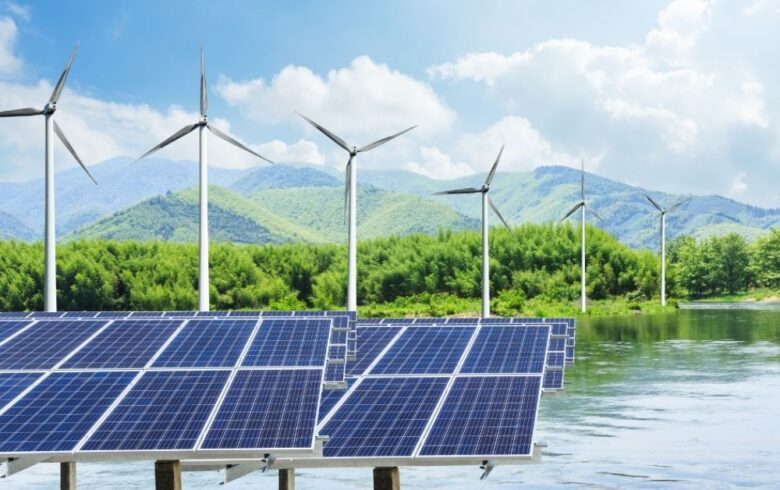Renewable energy is at a critical moment, where new technologies are changing the way we harness and use clean power. Eco-innovation, the development of environmentally conscious technologies that reduce environmental impact while driving economic expansion, has become the driving force for this transformation. These advances, from ultra-efficient solar cells to revolutionary energy storage systems, are making renewable energies more affordable, reliable, and accessible than ever.
Technology and Environmental Responsibility
Modern renewable energy solutions are more than just simple substitutes for fossil fuels. These solutions represent a fundamental shift towards technologies that work with nature rather than against it. This convergence has led to innovations that maximize energy production while minimizing environmental footprint. These solutions are beneficial for both the planet and the economy.
Smart grids are a favorable example of such developments, as they use artificial intelligence to optimize the distribution of energy and reduce waste. These systems are able to predict patterns of energy consumption, switch automatically between renewable energy sources, and store excess energy. This results in a more responsive and efficient energy infrastructure, which adapts to environmental conditions as well as human needs.
Solar Technology Reaches New Heights
Solar energy is now more affordable and efficient than ever. Photovoltaic cells convert more than 22% of the sunlight today into electricity, up from just 14% in a decade. Perovskite cells, a new technology, promise to achieve even higher efficiency levels while using cheaper materials.
Solar farms that float on water are another innovative way to reduce water evaporation and conserve land. The cooling effect of the water can make these installations perform better than traditional land-based systems. This project shows how eco-innovation is able to create multiple environmental benefits at once.
Wind Power Embraces Smarter Design
The technology of wind energy has advanced beyond just making the turbines bigger. We use sensors and artificial intelligence to enhance performance and prevent failures. Offshore wind farms continue to push boundaries, allowing them to access stronger and more consistent wind while minimizing visual and sound impacts on local communities.
Vertical-axis turbines have gained popularity in urban areas, where horizontal turbines would not be practical. These compact systems are able to generate energy from wind that comes from any direction. This technique makes renewable energy possible in locations previously unsuitable.
The Revolutionary Energy Storage System Changes the Game
Energy storage is perhaps the most important breakthrough in renewable energy adoption. Newer technologies are promising even greater advancements. Lithium-ion battery costs have dropped dramatically, and they’re more efficient. Flow batteries have longer life spans and are safer to operate, while compressed air storage is a large-scale solution for grid stabilization.
Innovative approaches, such as gravity-based systems that use excess renewable power to lift heavy weights and then generate electricity when the weights fall, are a wonderful example of innovative solutions. These mechanical systems do not require rare materials, and they can run for decades without any maintenance. They show how engineering creativity can be used to solve complex energy problems.
Progress is Fueled by Policy and Investment
Private investment and government policies are crucial to accelerating eco-innovation in renewable energy. Feed-in tariffs ensure long-term contracts to renewable energy producers, while tax incentives help make clean energy more attractive. Green bonds are a popular way to raise money for renewable energy projects around the world.
Research and development funding continues to fuel breakthrough technologies. Public-private partnerships, which include universities, government agencies, and businesses, have produced many of the most innovative advancements in renewable energy, such as advanced materials and sophisticated control systems.
Navigating Challenges and Seizing Opportunities
Despite its remarkable progress, renewable energy still faces challenges that require eco-innovation. Weather conditions can be a source of concern as they affect solar and wind energy generation. This challenge is becoming more manageable with the help of improved forecasting technology and a diverse portfolio of renewable energy sources.
Grid integration is another challenge, since the existing electrical infrastructure was not designed to accommodate distributed renewable energy sources. Smart grids and advanced energy management are developing to accommodate bidirectional power flows as well as variable supply sources. However, the opportunities outweigh any challenges. The potential of emerging markets for renewable energy deployment is enormous, especially as costs continue to fall. Developing countries can move directly to clean energy, bypassing fossil fuel infrastructure.
Clean Energy Future
Eco-innovation has transformed renewable energy from a niche into a mainstream industry. Environmental responsibility and technological progress continue to produce cleaner, more cost-effective solutions than traditional energy sources.
Renewable energy innovation is not slowing down. Eco-innovation is likely to accelerate as climate concerns increase and technology costs continue to decline, bringing us nearer a fully sustainable system of energy. The renewable energy revolution is not just about changing the way we produce power but also about reimagining how we relate to energy.
FAQs
1. What is the difference between eco-innovation and regular technological innovation?
Eco-innovation focuses specifically on reducing the environmental impact while maintaining or even improving economic performance. Eco-innovation, unlike traditional innovation, which may only prioritize cost or efficiency, considers the environmental impact throughout the lifecycle of technologies.
2. How quickly will the cost of renewable energy decline?
Over the last decade, solar and wind energy prices have fallen by more than 80%. The dramatic decline in cost makes renewable energy the most affordable source of electricity for many regions. This has accelerated adoption around the world.
3. Can Renewable Energy Replace Fossil Fuels Completely?
Renewable energy sources can be used to meet the world’s energy demands, but they require innovation in grid infrastructure and storage technologies, as well as energy efficiency.
4. How important is government policy in promoting renewable energy?
The government can reduce risk by providing subsidies and tax incentives and funding crucial research and developments that private companies may not undertake independently.
5. Which renewable energy technologies are most promising for the future?
Solar and wind power remain dominant. However, new technologies such as green hydrogen, advanced geothermal systems, and the next generation of battery storage have significant potential to address current limitations with renewable energy systems.




